Homecoming for Glider RU26
Late yesterday evening we recovered glider RU26, which had been cruising the waters of the Ross Sea since December 11. After 55 days, RU26 had traveled 732 miles, made 2,187 dives, and come within 2 miles of crossing the International Dateline and becoming a Golden Dragon like the rest of us (see yesterday’s post).
But just a week before the planned end of its mission something had gone wrong. A malfunctioning compass had caused a glitch in the glider’s normal operation, and RU26 sank to the ocean floor. This triggered a self-rescue program that jettisoned a weight and turned on the glider’s satellite phone. RU26 floated to the surface and sent Eli Hunter an email telling him we needed to go save the glider.
Gliders are ingenious machines that fly through the water without propellers or engines. They get all their motion by playing two forces against each other: gravity and buoyancy. When they need to float, they increase their volume so that buoyancy pulls them upward. When they want to sink, they reduce their volume so that they become denser than water and gravity pulls them down.
Whether they’re rising or falling, the glider’s wings turn some of that vertical motion into forward motion (about half a mile an hour). The only energy requirements are powering a pump to move oil in or out of the glider’s rigid interior—that’s what changes the buoyancy—and adjusting whether the glider tilts nose-up or nose-down.
A few people have left comments asking us how the glider flies, so we thought this was a good chance to look into gliders a bit more closely. Read on through the slideshow to see how they work:
- Though Eli Hunter, our team’s glider wrangler, had been communicating with RU26 daily since early December, this was his first time seeing the glider in real life. ‘You know, it’s amazing we can find these things,’ Eli said as we caught sight of its yellow tail fin from the zodiac. We were 120 miles from land and about 9,000 miles from Rutgers University, in one of the remotest seas on Earth.
- The water was glassy calm, but a strong swell was moving the glider’s tail fin in and out of view every few seconds. The glider assumes this tail-up pose every time it surfaces. An antenna in the top of the tail fin contacts a GPS satellite to find out where it is. Then the glider makes a phone call to an Iridium satellite, sends its collected data to Rutgers University, and asks for more instructions.
- Jeremy Lucke holds the zodiac motor steady while Eli and I use a cradle to haul out the glider. The main body is divided into three sections separated by dark bands, plus a tail cone and a nose cone. The glider’s battery and ballast pump are in the first (leftmost) compartment. In the middle section, by the wings, are the scientific sensors and the computer that controls them. The back section contains the computer that pilots the glider and communicates with the scientists. The orange-tipped bar beneath the wing is the glider’s own CTD sensor. Other sensors measure oxygen, fluorescence (an indication of chlorophyll), particles in the water, depth, and distance from the bottom.
- Both the tail cone and the nose cone are designed to let water in—only the middle three sections of the glider are watertight. Here in the tail, the shiny cylinder measures the dissolved oxygen in the water. The plastic stick with the red tape around it is a safety plug that ensures the power supply is off, so the batteries don’t drain. At launch that gets replaced with a green plug that switches the glider on. The metal pipe below the plug is the emergency mechanism that saved RU26 from a watery grave. When the glider figured out it was stranded at the bottom, it jettisoned a 1-pound steel weight, raising the glider’s buoyancy and bringing it to the surface where we could rescue it.
- Adjusting buoyancy to make a glider fly is a neat trick, but it requires careful balancing beforehand. The glider must be neutrally buoyant and balanced front to back so that a small change is enough to make it rise or fall. A pump in the forward dry section moves oil into a pouch in the wet part of the nose to increase the glider’s volume and make it rise. To sink, it pumps the oil back into the dry compartment, reducing the volume again. The final step is a motor that moves the heavy battery a few inches forward or backward. That tilts the nose down or up—and the glider is ready to fly.
- Dr. Josh Kohut, Eli, and Ana Filipa Carvalho carefully open the dry interior of the glider. They’re hoping to find out what went wrong with it, but this is a new model of glider they’ve never worked on before. As they loosened the first screw we heard a sharp hiss as new air rushed inside. But that was expected: the team always creates a vacuum inside the glider to ensure a tight seal and to keep condensation from forming on the inside. Remember what our styrofoam cups looked like? The yellow walls of the glider are made of carbon fiber to withstand the pressure of 1,000 meters (0.6 mile) depth.
- This is the circuitboard that operates the glider and runs the programs the scientists send it. It’s basically a computer without the plastic case, keyboard, or monitor. Eli spotted a suspicious bubble of liquid next to the tiny transparent jar in the center of the upper board. This is the attitude sensor, which tells whether the glider is tilted side to side or front to back. Dr. Kohut is looking at it a bit more closely to see if it’s the cause of the problem.
- To figure out whether they can fix the glider, Dr. Kohut and Eli called home to the rest of the glider team at Rutgers University—some of whom have been working with gliders for 12 years or more. These people include Dr. Scott Glenn, Dr. Oscar Schofield, John Kerfoot, Chip Haldeman, Tina Haskins, and the group’s ‘glider whisperer,’ Dave Aragon, who Dr. Kohut says has a somewhat telepathic connection with the glider. About 60 Rutgers college students also help on the glider team, and they occasionally send gliders on missions themselves.
- This is one of two 2-gigabyte data cards that the team retrieved from RU26. Even though we’ve been getting data from the glider every day, complete are stored on these cards. Satellite connections are slow and expensive, so the glider sends back measurements taken every 20 seconds. Those are about 50 kilobytes in size and take about 15 minutes to transmit. The memory cards contain measurements taken every 2 seconds. ‘When we first started flying gliders the main goal was just getting the glider back,’ said Dr. Kohut, who took part in the first-ever ocean launch of a glider more than 10 years ago. ‘So it’s pretty nice to be able to put something in the Ross Sea for 55 days and get quality science data back.’
Thanks to everyone who asked us about the gliders and prompted us to write this post. We love getting your questions and we’re answering every one of them. It may take a few days because of our e-mail connection and the amount of work going on the ship—but keep checking back on your questions, because we’ll post an answer sooner or later.


 February 5, 2011
February 5, 2011 
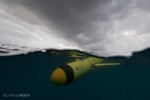

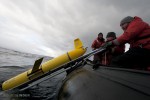
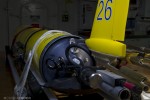
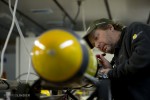
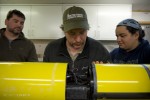
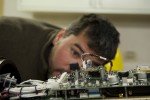
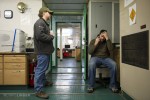
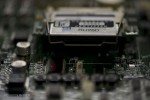







5 Responses to “Homecoming for Glider RU26”